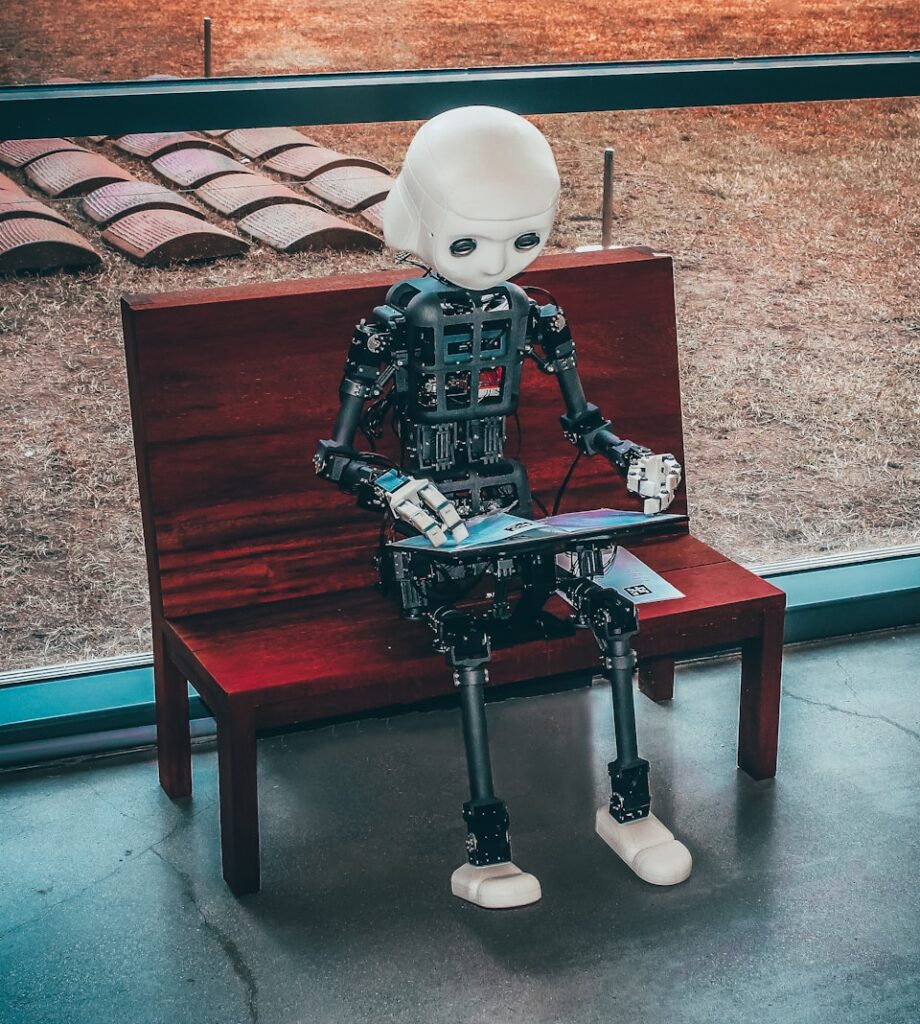Artificial intelligence is here — and it has arrived in the classroom. What was once considered science fiction has become a reality. Students use tools like ChatGPT, DeepL, or other resources to gather information, complete assignments, or revise texts. But how is AI changing everyday school life? What is needed to turn technological hype into meaningful educational progress? A new policy paper by the Friedrich Naumann Foundation for Freedom (FNF) (in Germany), in cooperation with the think tank iRights.Lab offers answers — and shows: the path to meaningful integration of AI in schools and teaching is achievable, but still full of challenges.
Between Enthusiasm and Disorientation
What initially appears to be a leap in digitalization is, in fact, a confusing mix of curiosity, excitement, overwhelm, and regulatory uncertainty. Many teachers are generally open to the topic but feel left alone when it comes to the technical, legal, and didactic demands. According to a recent survey, one in two teachers already uses AI in the classroom, primarily for lesson planning or task creation. At the same time, there is often a lack of training opportunities, reliable infrastructure, and clear guidance for day-to-day teaching.
In fall 2024, the Standing Conference of the Ministers of Education and Cultural Affairs (KMK) presented joint recommendations for the first time. Among other things, it calls for more training, transparent frameworks, and a reflective culture of assessment. However, implementation — as is often the case in Germany’s federal system — is inconsistent. Some federal states rely on their platforms and licenses, while others appear to count on the improvisational skills of individual schools.
Recognizing Potential Without Falling Into Techno-Utopianism
The authors of the paper emphasize that AI can indeed enhance educational processes, provided the right conditions are in place. Particularly in school organization, personalized learning, or as an inclusive support tool, new opportunities are emerging. Tools such as Fobizz or FelloFish offer adaptive learning paths, automated feedback, and translation functions. This can especially benefit students with special educational needs or varying language proficiencies.
However, AI applications are no miracle solution. The authors of Education and AI warn against inflated expectations, such as trying to replace teachers with AI or outsourcing pedagogical quality to algorithms. Learning processes thrive on social interaction, individual attention, and values-based reflection. Especially in the school context, more than just efficiency is needed: trust, stable human relationships, sound judgment, and above all, pedagogical responsibility are essential.
Rethinking Assessment – But How?
The impact of AI on exam culture is currently a hotly debated issue. If students write their essays with ChatGPT, how can individual performance still be assessed? The Standing Conference of the Ministers of Education and Cultural Affairs (KMK), therefore, calls for new forms of assessment that incorporate future skills such as critical thinking and collaborative work. Academic performance should not only be evaluated but also questioned and contextualized—even in an AI-driven environment.
Closing Digital Gaps Before They Become Equity Gaps
Without functioning infrastructure, any pedagogical concept for embedding AI remains a distant theory. According to a survey by the Vodafone Foundation, around 42 percent of students report poor internet connectivity, and many lack appropriate devices. While the first Digital Pact for Schools had a positive impact, it is not sufficient. A swift and effective Digital Pact II is long overdue.
At the same time, equity must also be taken into account: AI must not only benefit the privileged. Rather, federal and state governments must ensure that all schools—regardless of sponsorship or region—have access to data protection-compliant and pedagogically sound AI applications.
Education System in Search Mode
The integration of AI into everyday school life is more than a technical question. To prevent it from becoming an open-ended educational policy experiment, appropriate framework conditions must be established. It is also clear that teachers need time, space, and support for continuing education. Students need guidance to learn how to distinguish between AI-generated content, facts, and deception. And policymakers need the courage to act across jurisdictional boundaries and to seize opportunities rather than letting them pass by.
The ten theses that frame the paper are more than a conclusion. They are a call to action for an education policy that shapes the future without being driven by digital trends or hypes. And a plea for an education system that embraces responsibility, technologically, pedagogically, and socially, with a forward-looking mindset.
Support for these ideas also comes from the Board of the Friedrich Naumann Foundation for Freedom and the management of iRights.Lab. Dr. Maren Jasper-Winter, Board Member of the FNF, is convinced:
“The policy paper provides the essential compass for a future-proof education policy. It shows that we cannot simply allow AI in schools, but must shape it through transparent guardrails and participatory processes. Only then will our education system remain open, fair, and capable of innovation.”
Philipp Otto, Director and CEO of iRights.Lab adds:
“When we talk about AI in education, it is primarily about the people who use it. Students and teachers alike need strong support on the path to the future of learning.”
Continue exploring:
Toolkit for Change: Embedding ESG in Non-Profit Sector
AI Regulation: Comparative Analysis of EU, USA, and Ukraine’s Approaches



